 Ten cars, 1680bhp and a loop around verdant Kerala. What a way to spend the day!
Ten cars, 1680bhp and a loop around verdant Kerala. What a way to spend the day!
Story Harmaan Madon
Photography Sanjay Raikar
Peter Chacko is a car enthusiast and the founder of the eponymous tuning concern Pete’s. He invited us to Kochi to drive a line-up of ten cars, which included three Skoda Lauras, two Octavias, a Toyota Innova, a FIAT Grande Punto, a Maruti Swift, a BMW 3 Series and a Ford Fiesta. All except the Fiesta were turbocharged and only the Octavia RS and the Fiesta were petrol cars.
Performance cars? And diesel? You’ll be amazed at what modern diesels can do, even under the hood of a demure family hatch, especially once Peter and his team of mechanics have tweaked them. Along the way, we also sampled delightful Keralite cuisine, enjoyed a tour of the backwaters and learned to curse in Malayalam at the bus drivers. All the cars we drove were discernibly quicker than their stock siblings, with the biggest improvement in terms of their drivability. Read on for a detailed look into what each of these cars has to offer.
 MARUTI SWIFT DDIS; 110PS
MARUTI SWIFT DDIS; 110PS
The little Swift was a hit the day Maruti announced they were going to build it; the diesel even more so. The stock engine was a revelation as far as little diesels went. It was zippy and responsive with a smooth power band. But it is only human to want more…
In went a performance remap, a hybrid turbo, filter and a Supersprint exhaust. The catalytic converter has been removed as well and replaced with a new downpipe. Net result? 110PS!
If anything, it overwhelms the poor little Swift’s clutch. The owner acknowledges that it has proved to be the car’s Achilles heel, with a clutch lasting only 20,000km before requiring a replacement. But who said thrills come cheap anyway? The Swift’s good engine is now a great engine and throttle responses are lovely for this car. It truly feels like a great little hot hatch. It sounds great too and a layman would do a double take if you told him that its diesel. The owner has upgraded the suspension to Bilstein B14 units, which have given the Swift much more mature responses. On occasion, the car even went airborne while being driven spiritedly, but the suspension didn’t hit the stops. The rate of response is an eye opener, notably the way the car copes through bends especially on changing cambers. The short wheelbase helps of course, but it’s amazing to see what a simple replacement of dampers can achieve. There will surely be a burgeoning market for this car’s upgrades given the popularity of the Swift.
FIAT GRANDE PUNTO; 90PS
In many ways, the Grande Punto was the disappointment of 2009. A lot was expected from FIAT’s new baby and indeed its sexy styling had many people eager to sample the car in real life. Instead, drab interiors and an insipid drive let it down. At Pete’s, Mission Punto was launched. A tuning box boosted power to 90PS instantly. The car in question also got a Bilstein B6 suspension and Tarox rotors and pads. A g-meter was installed on the dashboard too.
When you get rolling, it doesn’t feel especially quick, and to some extent, the car’s gearing is to be blamed. The gaps between the ratios haven’t been well thought through and this limits the car’s performance. The linear urgency you enjoy in the Swift, for example, is totally lacking in this car. It makes up for it, however, with delightful handling. The Grande Punto essentially has very sorted handling, but the Bilstein dampers contribute to make it better still.
The weird seating position and rubbery gear lever are peeves in this car when you begin to press on, but the steering response and feedback is excellent for a small hatch. On 15-inch wheels and wide rubber, the braking was very good too, as I found out while playing dodge ball with a murderous bus driver. All said, if you are swayed by the Punto’s good looks and really want one, then we’d recommend the first accessory you get yourself is a tuning box. This car needs one.
FORD FIESTA 1.6S, 105PS
The only naturally aspirated petrol car among the lot, the Fiesta S was nevertheless hugely entertaining to drive. The basic platform of the car lends itself very well to being a driver friendly vehicle with good steering response and body control. And coupled with the new Bilstein B6 dampers and grippy tyres, its handling could only improve. There was a new found sharpness to the car, especially during turn in.
The engine benefited from the Green STORM filter and Milltek exhaust, which allowed the motor to breathe freely. It spooled up very quickly to the accompaniment of a throaty rasp from the exhaust. The Fiesta’s moderate power output meant that wheelspin and torque steer were never going to be issues, so exploiting this car’s performance was much easier. Indeed, given its sharp steering and precise body control, one could more than easily keep up with the other more powerful cars. The Fiesta’s gearbox too is a delight to use with a well weighted shift action and precise gates. It goes to show how a well-sorted car to begin with will always be a good starting point for a tuning job.
In the future, Pete’s is considering a turbocharger for the Fiesta as well, although it will require a lot more work to retrofit as compared to a bolt on kit for any existing turbocharged cars. There are turbo kits available for this car and once Pete’s feels they have the expertise and bandwidth, such a modification will definitely be on the cards. A Fiesta with around 50PS more would really be a delight to drive. The chassis can surely handle more power than the 105PS the car currently produces.
 SKODA OCTAVIA 1.9 TDI, STAGE 3; 180PS
SKODA OCTAVIA 1.9 TDI, STAGE 3; 180PS
Honestly, driving an Octavia has always been a pleasure. Yes, the Laura is far more refined and it is a better car overall, but the Octy is a car that will always appeal to enthusiasts. For starters, you sit much lower and the slightly retro looking dash and dials have a certain charm and appeal all their own. The stock Octavia always felt slightly heavier at the helm as compared to its new big brother and road noise is more too, but the older car doesn’t feel unrefined by any standard. Instead, a driving enthusiast would say it has more ‘feel’. So how does this car stack up then? Well, this particular example is an old car with nearly one lakh kilometres on the clock. It’s been used and used well, but you wouldn’t know it.
The engine has been given a complete once over. It gets a Stage 3 map, upgraded injectors, a bigger intercooler and a reworked exhaust system. The original Octy didn’t suffer from any drivability problems, but this car is just so much better. You can use higher gears and aren’t forced to downshift every once in a while, which pays dividends in fuel economy. Indeed, the owner claims he regularly gets in excess of 20kmpl from his car on the highway. Of course one must have the maturity to resist flooring the car at every opportunity, but the fact remains that since the engine is breathing better and is optimally fuelled, it will pay dividends as far as fuel economy is concerned.
Gear throws felt long, but then this is to be expected in such a well used car. No trick differential and an older TC system meant that there was a reasonable amount of wheelspin to deal with, but the inherent power delivery of the engine ensured it was easy to work around. This car too used a six-pot brake package, but the weighting was significantly heavier as compared to the Lauras. Again, this could likely be the case of an older brake servo. If you have an old Octy or are planning to pick up a used example cheap, then this is one of the better ways to spend your hard-earned money and have a bit of fun.
 SKODA LAURA, STAGE 2; 180PS
SKODA LAURA, STAGE 2; 180PS
Another one of the family cars, this particular Laura belongs to Peter’s cousin. It has been similarly tweaked as Peter’s personal car, but doesn’t have the raft of suspension changes. It uses upgraded dampers, although the stock anti-roll bars remain. This Laura too has a hybrid turbo, however, it makes do with a single intercooler and the injection system is stock as well. The net result is 180PS vis-à-vis 220PS in Pete’s own car but trust me, this one is no slouch either.
The best part about this car was that it was a manual and so driving it on twisty roads was a real joy. Kerala’s roads are notoriously narrow and full of weaving buses that stop wherever they please. My time at the wheel of this car was spent during the morning rush hour. However, the sweetness of the engine’s response and the flexibility of the manual ‘box, made it an easy car to drive. You get a real sense of urgency to the throttle response with the biggest improvements in midrange, which makes for much better drivability. The initial turbo lag, typical of most diesels, is reduced as well. You tend to cover ground that much quicker in this car, which is mostly down to its great usability.
SKODA LAURA 2.0 PD TDI; 180PS
Many customers who come to Pete’s want to make their cars go faster. And while a lot of what Pete’s does is under the bonnet and out of sight, there is a lot of stuff he can do to make your car pretty too. This particular car has oodles of kit from Milotec which makes specialist body kits for the Skoda range in Europe. There’s a look-alike front bumper, modelled to make the car look like a Euro spec Octavia RS, two rear spoilers including one on the lip of the rear windscreen. This car also has vRS seats on the inside and Pete’s has done a commendable job of mating the vRS bolstering with the Indian Laura’s motorised adjustment.
What’s unique about this car are the paddles behind the steering wheel. Mated to the six-speed DSG gearbox, they allow the driver to change gears without taking his hands off the steering wheel. Very cool! The DSG ‘box is quite responsive in any case, nonetheless, it does add to bragging rights.
The Laura uses Bilstein B6 suspension, which in spite of being not adjustable, felt extremely well sorted for this car in particular. The roads we drove on weren’t exactly smooth and the suspension worked well over sharp edged bumps and even on undulating tarmac. Although it didn’t have a trick differential, the car’s factory fitted traction control system limited wheelspin and torque steer to some extent.
As part of the styling package, this car had the additional Muth mirrors. These are highly convex mirrors with built-in LEDs that are stuck on to the regular wing mirrors. They might look good and the flashy LEDs will definitely be popular with the boy racer lot, but the fact of the matter is that these mirrors do not have the sense of depth perception that you derive with regular plano convex ones. Pete’s isn’t finished with this car though. A higher state of tune with an upgraded map, new injectors and fuelling is also on the cards with 300PS as the target.
 SKODA LAURA 1.9 TDI PD, STAGE 3; 220PS
SKODA LAURA 1.9 TDI PD, STAGE 3; 220PS
This is Peter Chacko’s personal car and hence is often used as a test mule. Pete’s has thrown everything at it from the parts bin and this car is in a Stage 3 state of tune, which means it’s squeezing out as much as feasible. Of course, more is possible, but then the strain on the parts would be too much. This Laura has an upgraded hybrid turbocharger with twin intercoolers, high-performance injectors, a special air filter and a specially made exhaust. The end result is 220PS, which is more than double of what the stock car delivers. Managing all that power requires upgrades to the drivetrain as well. Hence, this car gets a new differential which limits wheel slip and tries its best to apportion power equally to the driven wheels. It also has fully adjustable dampers and upgraded anti-roll bars to keep it on the road. If you’re going to be doing silly speeds (which are very easy to attain in this car), then you need super brakes as well, and Pete’s Laura has the full monty. The 312mm front discs are gripped by ten-piston callipers, which have as much bite as Godzilla’s jaws.
Peter also has the show to match the go and so 17-inch Borbet alloy wheels wrapped in excellent Michelin rubber, Stanley leather interiors and Smart Wax detailing complete the package. But how is it on the road? Expectedly, the car is very quick. You can feel its traction control system working overtime when you launch this car. In fact from a standstill, it is easier to play with than any of the manual cars we drove, thanks to the DSG ’box. On a tight uphill section, where I drove the car, the punch coming out of the corners was incredible, but it’s on such roads where you miss a full manual ’box. The ride control suspension adjusts the damping between two presets – comfort and sport, but on uneven roads it is best to leave it in the comfort mode which actually gives you more control. Unfortunately, our time behind the wheel was restricted as after some time, the idler pulley started squealing unbearably (which was supposed to have been replaced at the earlier service but wasn’t) and so Peter took a call to retire the car early for the day.
SKODA OCTAVIA VRS PETROL; 300PS
This is the ultimate wet dream of every gaming enthusiast. If the ten cars we drove were trump card cars, then this one would beat them all. It has a bigger turbo, reworked fuelling, a larger intercooler, high-performance clutch and differential, a fully worked upon suspension including new springs, dampers and anti-roll bars and a 10-piston Tarox brake package. End result? 300PS, a stiff suspension and truly eyeball popping brakes! Sure, you may have driven a 300PS car before, but then this particular version is a different animal. Launching it for our performance runs elicited howls of protest from the tyres, even after they’d been given sufficient time to warm up.
I drove this car last, and surely it was a handful, but in an exciting sort of way. When you’re really pressing on, you need both hands on the wheel at all times, the huge power and stiff suspension kick the wheel about in your hands. It’s not a car for bumpy back roads in Kerala though. However, on something like the Mumbai-Pune expressway for example, you’d need something with either a prancing horse or the words ‘Carrera’ on the back if you wanted to keep up. It’s this character which appeals to tuning enthusiasts; the look-innocuous-but-go-like-hell character of highly strung tuned specials.
On the drive up, when this car was behind me, I was delighted by the pop of the turbo wastegate and the crackle of its exhaust. You get a real sense of urgency with this car, but strangely, it doesn’t feel quite as manic on the inside. With Lionel Richie on the high-end stereo, it was a surreal experience to cover ground so rapidly, the turbo whistle a faint background score to the lovesick singer’s crooning.
Pete’s has built an even madder 500PS version of the Octy, which sadly we didn’t drive, but authentic reports are of that particular car troubling a Nissan GT-R owner. Now that’s saying something. If you wish to boost your Octy RS to such a high spec, you need to rework the entire engine’s internals including pistons, crank and connecting rods and that might not be worth the cost and effort.
TOYOTA INNOVA D4-D; 125PS
A black Innova with 17-inch chromed alloys is as gangsta as it gets, but that’s one of the big hits for Pete’s. Indeed, they sell more dampers for the Innova than they do for any other car. It too uses Bilstein B6s, but the mounting points have been modified to fit the Innova. Peter told me about how Bilstein could develop a suspension for any car provided a customer approaches them for a minimum order of 500 units. Peter and some friends from Thailand (which is a huge market for the Innova) got together and approached Bilstein and the company agreed.
Yes, it had a tuning box too and that helped to make it smoother and more drivable, as we’d come to expect with all the cars. But really, what can you say when a big, tall car like the Innova is game for some mischief in the corners? Truly, it is an eye opening experience. Best of all, there was no choppiness over undulations. On a particularly fast and flowing stretch, we encountered a series of crests which would have been seen a stock Innova with all four wheels in the air, but the way this car handled was a riot. We didn’t have the time or space to do a slalom, but I guess the easiest reckoner of the car’s performance would come through in a slalom.
BMW 320D; 190PS
The handling versus ride comfort debate has been done to death, especially in the entry-level luxury segment. You want handling? Buy a BMW. You want ride comfort? Buy a Merc…yada yada yada. Doubtless, there have been countless individuals who might’ve fantasised about a car that delivered both, and at the click of a button. One such individual, a distinguished middle-aged gentleman, came to Peter Chacko one fine day with this exact problem. His 3 Series’ ride was upsetting his perfect coiffure, but he wasn’t willing to trade in his car for something softer either. Did Pete’s have a solution? Indeed he did, in the form of Bilstein’s B16 Ride Control suspension. An innocuous grey knob, it fits in place of the car’s cigarette lighter. One push for soft and one more to cancel. Voila! Ride quality at the touch of a button.
I sampled this car from the backseat, and believe you me, it was truly impressive. The jarring one normally feels, especially while getting on or off a bridge and over small but practically vertical speed breakers, has all but disappeared. Instead, there’s a pliancy to it which makes you wonder if you’re really in a BMW. Switch to sport however, and along with the awesome handling, Pete’s should be handing out free gift cards to a chiropractor’s clinic.
INTERVIEW: PETER CHACKO
 From construction to confectionery to hospitality and now cars, Peter Chacko is a man with diverse interests. Harmaan Madon spoke to the man behind Pete’s
From construction to confectionery to hospitality and now cars, Peter Chacko is a man with diverse interests. Harmaan Madon spoke to the man behind Pete’s
CI: Tell us how you decided to get into the tuning business?
PC: I have always loved cars and I love driving. Unfortunately, there are few performance cars in India and those that are available, are very expensive. I sensed that there were many people in India like me who wanted to enjoy fast cars. So, I began exploring performance tuning upgrades on the internet in 2004. I started Pete’s in 2005, after I sampled some performance parts on my own car.
CI: What are the upgrades that Pete’s offers?
PC: We offer a host of tuning upgrades including hybrid turbos, tuning boxes and complete remaps of engine ECUs. We also have complete suspension units including springs, dampers and anti-roll bars. Our customers can also upgrade their cars’ brakes, wheels and tyres. On the styling front, we have body kits, alloy wheels, lights and mirrors.
CI: What is your customer demographic like?
PC: Surprisingly, most of our clients are over 30 and a lot of them are self-employed, either businessmen or professionals like doctors and lawyers.
CI: What are the most popular upgrades?
PC: We sell a lot of tuning boxes for Skodas and Swifts, but we’ve been overwhelmed by the number of customers who come in with their Innovas, notably for the suspension.
CI: How do you see the market for performance tuning growing in India?
PC: See, there will always be enthusiasts all over India. Although we started from Kochi, we now have a lot of customers in Bangalore, Mumbai and Delhi. We’re expanding every year and have clients in Goa, Kolkata, Indore, Jalandhar, Hyderabad, Belgaum and Ahmedabad. While tuning boxes are a straight fit and take about 10 minutes to install, turbos and suspensions require more time and work. Earlier, we’d ship the cars to Kochi to our Performance Store, but now certain dealers (like in Mumbai) can carry out complete jobs themselves. We definitely see more and more customers wanting better performance from their cars, so it is a growing market.
CI: What about reliability and warranty?
PC: See, all these upgrades are running perfectly on numerous cars in Europe and there are no complaints about reliability. We tune each car individually and account for factors such as temperature and height above sea-level before returning the cars to our customers. We also offer a year’s warranty on all our parts.






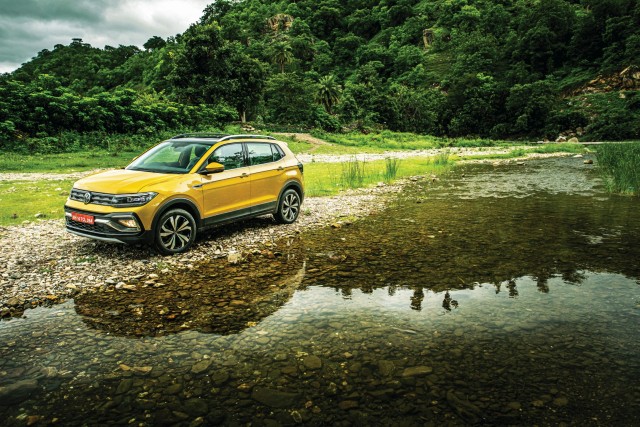
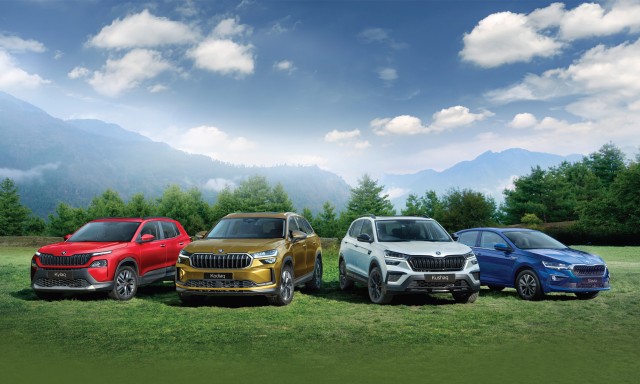

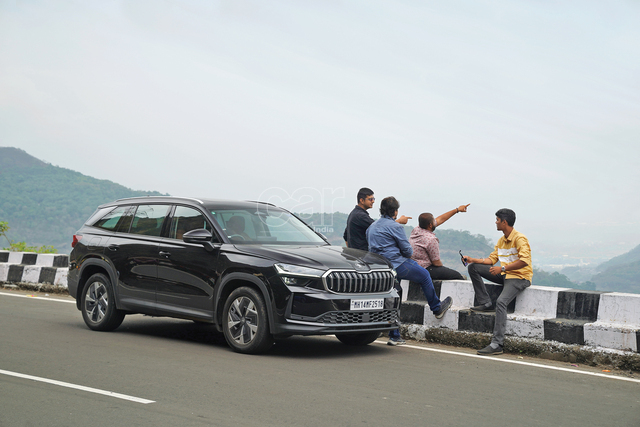


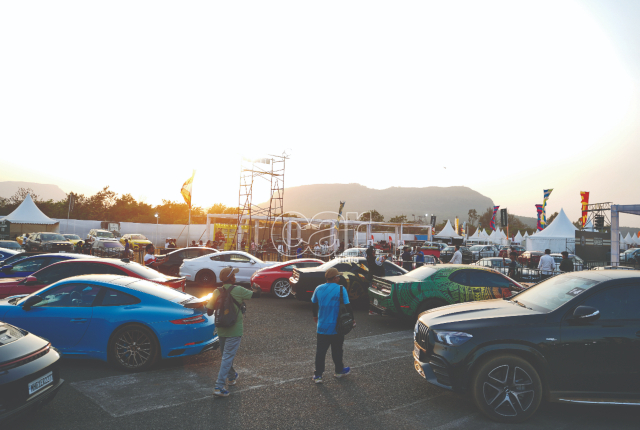
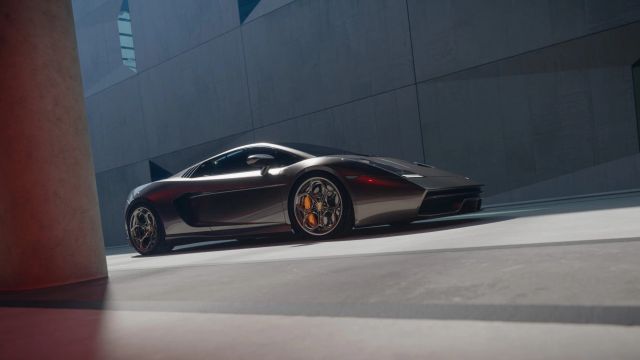
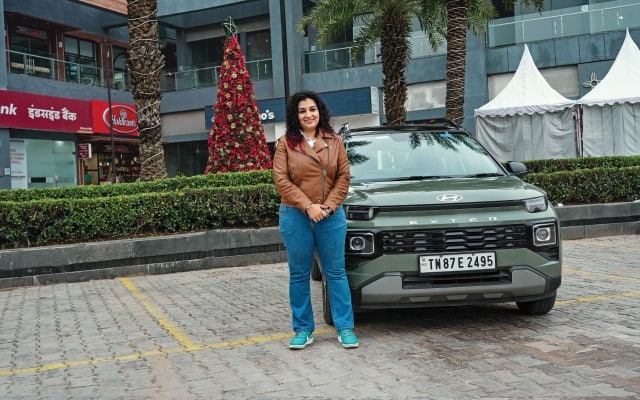

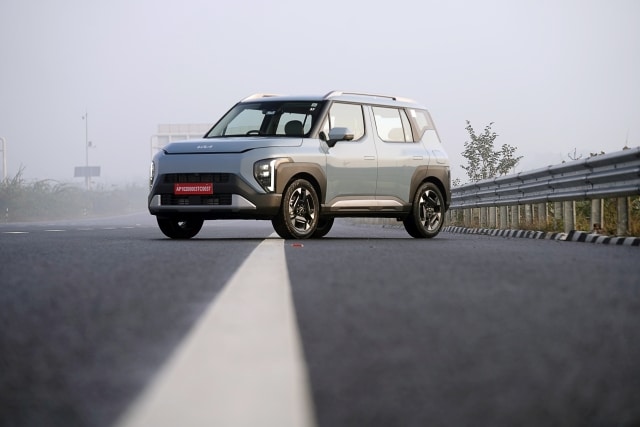




Leave a Reply